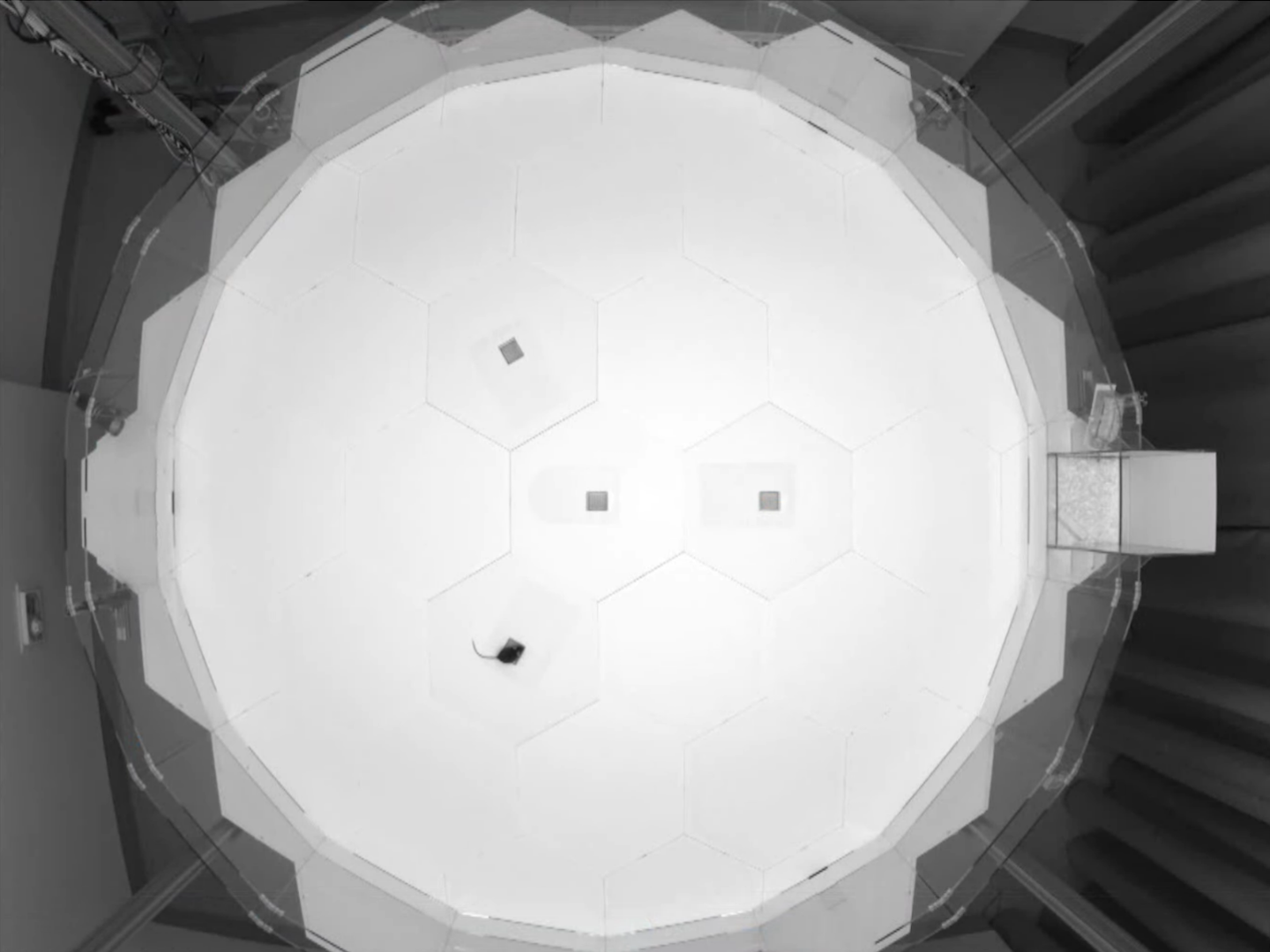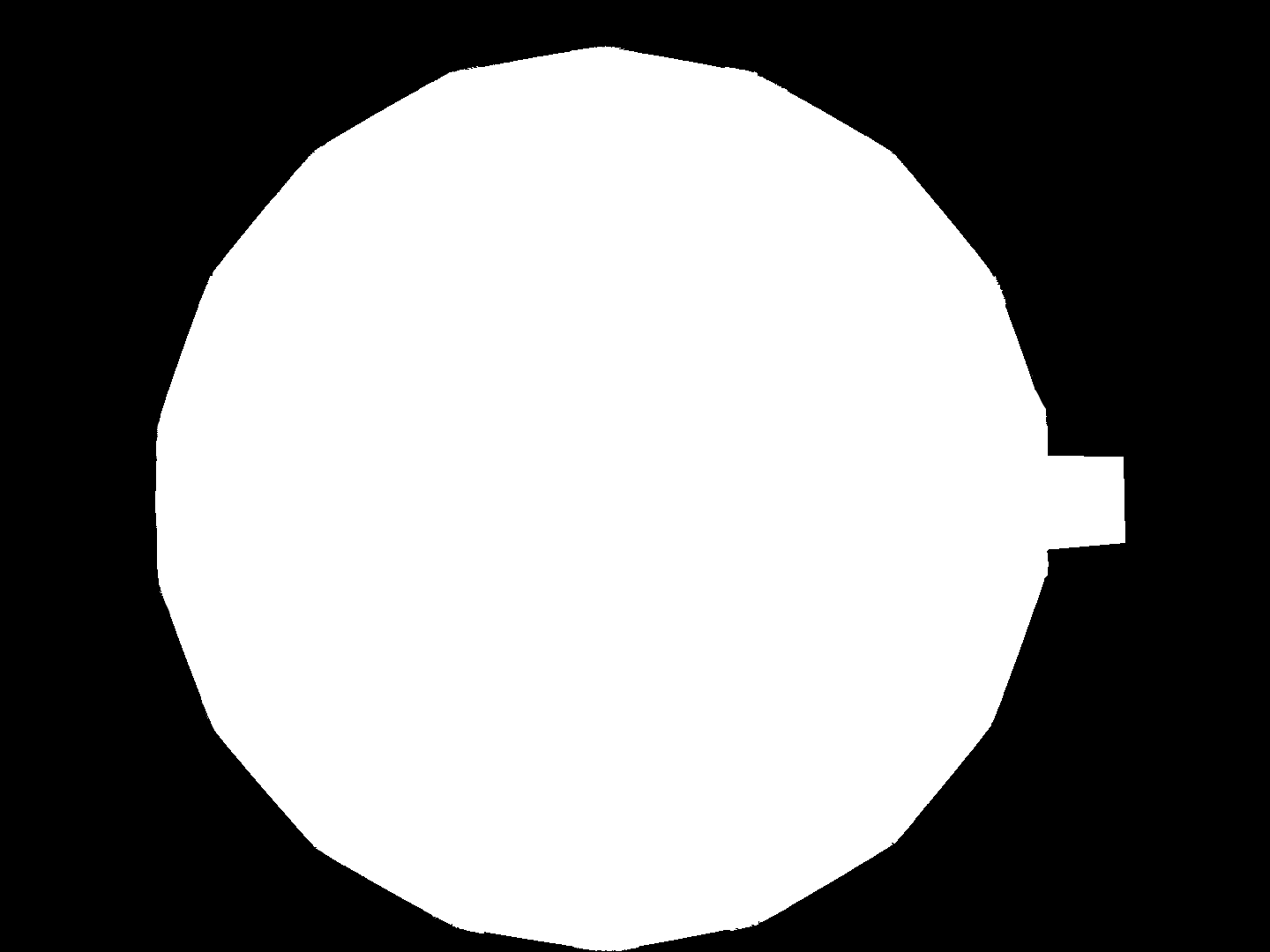Subject Tracking#
The subject tracking module processes camera frame events to facilitate comprehensive tracking and analysis of animal positions and movements in the habitat or within specific regions or areas in the habitat that are of behavioural significance (e.g. nest, foraging patch).
It includes nodes such as PositionTracking for detecting and tracking blobs (of objects, e.g. animals);
PoseTracking, which leverages SLEAP’s multi-animal tracking capabilities, to simultaneously track and identify different animals; and
RegionTracking for determining if a tracked object is within a specific region.
These enable real-time tracking, event triggering, and data logging, making it easier to monitor and analyse animal behaviour in various experimental setups.
Nodes#
PositionTracking#
The PositionTracking (Aeon.Vision) node accepts frame events generated by a camera and detects dark objects against a light background using a standard blob tracking pipeline.
Briefly, the incoming image is thresholded to a binary image, then masked using a binary mask image generated by the user. This mask should include any area in which the animal could be at a given time, and must have the same width and height as the camera event images for which it is intended. This ensures any movement or activity outside of the region of interest (therefore have pixel values of zero in the user-generated mask) are eliminated and not tracked. Below is an example of an input image of the habitat from a top-view camera and its corresponding mask.
Contours are found and located using the FindContours and BinaryRegionAnalysis functions from OpenCV.NET (available in Bonsai.Vision package) and a custom TakeLargestRegions (Aeon.Vision) to take the n largest regions as defined by the property TrackingCount.
Inputs#
Sequence of Harp.Timestamped<Aeon.Video.VideoDataFrame>s from a specific camera published by a SpinnakerVideoSource (Aeon.Video) node.
Outputs#
Sequence of Harp.Timestamped<Bonsai.Vision.ConnectedComponentCollection> describing the features of a detected subject. Also published to a Subject.
Properties#
Tracking parameters#
Property name |
Description |
|---|---|
Mask |
The full or relative path to the mask image, in |
Threshold |
The threshold pixel value to apply in order to detect a dark blob on the light background |
TrackingCount |
The expected number of animals to track simultaneously |
Subjects#
Events from this node are published to shared Subjects.
Here you set the names used for these Subjects to identify events for this node.
Each of these Subjects becomes accessible in the Bonsai editor’s toolbox anywhere in the workflow using the name set here.
Device event subjects#
Subject name |
Type |
Description |
|---|---|---|
TrackingEvents |
|
The |
Device input subjects#
Subject name |
Type |
Description |
|---|---|---|
FrameEvents |
|
The |
Usage#
Create a GroupWorkflow and give it an appropriate name, e.g. “TrackingTop”.
Inside, place a PositionTracking (Aeon.Vision) node, externalise all properties, and connect it to the WorkflowOutput.
Next, add a SubscribeSubject node, connect it to the PositionTracking node as an input, and externalise the Name property.
This name will be set to the Subject that carries the FrameEvents from the camera on which tracking is to be performed (e.g. “CameraTop”).
PoseTracking#
Pose tracking utilises SLEAP, which is fully integrated with Bonsai through the Bonsai.Sleap package, to simultaneously track and identify different animals within the habitat.
In Aeon experimental workflows, two linked IncludeWorkflows are provided to give this functionality.
The PoseTracking (Extensions) node contains the complete data flow and processing workflow for identity and tracking of subjects from video frames captured by the cameras, whereas the PoseTracking (Aeon.Vision.Sleap) node is used within this workflow to perform the model inference step of processing.
Properties#
General#
Property name |
Description |
|---|---|
IdentityMinConfidence |
Set the minimum confidence score applied to computation of an object (animal) instance’s centroid |
FrameStep |
Frame by frame inference and pose estimation is computationally expensive. It may be helpful to downsample the incoming stream to run inference in real time. Here you can set the number of frames to skip between incoming frames |
IdentityMinConfidence |
Set the minimum confidence required to label an instance’s identity |
ModelPath |
Set the partial path to the saved |
PartMinConfidence |
Set the minimum confidence required to assign a label to an instance’s keypoint |
Subjects#
Both generated and input events of this node are collected and passed to published Subjects.
Here you set the names used for these Subjects to identify events for this node.
Each of these Subjects becomes accessible in the Bonsai editor’s toolbox anywhere in the workflow using the name set here.
Device event subjects#
Subject name |
Type |
Description |
|---|---|---|
TrackingEvents |
|
The |
Device input subjects#
Subject name |
Type |
Description |
|---|---|---|
FrameEvents |
|
The |
Usage#
The trained model must first be exported to Protocol buffer (.pb) format using the sleap-export command line interface.
Next, create a GroupWorkflow and give it an appropriate name, e.g. “PoseTracking”.
Inside, place a PoseTracking (Aeon.Vision.Sleap) node, externalise all properties, and connect it to the WorkflowOutput.
RegionTracking#
The RegionTracking (Aeon.Vision) node computes and returns a boolean describing whether the tracked position (from a PositionTracking (Aeon.Vision) or PoseTracking (Aeon.Vision.Sleap) node) of an animal falls within a defined region of the camera image.
Properties#
General#
Property name |
Description |
|---|---|
Region |
An array of four |
Subjects#
Both generated and input events of this node are published to shared Subjects.
Here you set the names used for these Subjects to identify events for this node.
Each of these Subjects becomes accessible in the Bonsai editor’s toolbox anywhere in the workflow using the name set here.
Device event subjects#
Subject name |
Type |
Description |
|---|---|---|
RegionEvents |
|
The |
Device input subjects#
Subject name |
Type |
Description |
|---|---|---|
FrameEvents |
|
The |
Usage#
Place a RegionTracking (Aeon.Vision) node, externalise the Region property, and rename it to indicate the region this node is responsible for monitoring (e.g. “NestRegion”).
Next, add a SubscribeSubject node to subscribe to the common “TrackingEvents” Subject (e.g. “TrackingTop”) and connect it to the RegionTracking (Aeon.Vision) node.
DistanceFromPoint#
The DistanceFromPoint (Aeon.Vision) node computes the distance (in pixels) between the tracked position (from a PositionTracking (Aeon.Vision) or PoseTracking (Aeon.Vision.Sleap) node) of an animal and a defined point in the camera image.
Properties#
General#
Property name |
Description |
|---|---|
Region |
An array of four |
Usage#
Place a DistanceFromPoint (Aeon.Vision) node, externalise the Value property, and rename it to indicate the point of interest for this node (e.g. “ArenaCenter”).
Next, add a SubscribeSubject node to subscribe to the common “TrackingEvents” Subject (e.g. “TrackingTop”) and connect it to the DistanceFromPoint (Aeon.Vision) node.
The output of the DistanceFromPoint (Aeon.Vision) node can then be used with other nodes
like the InRange (Aeon.Acquisition) node to trigger events or commands based on the proximity of an animal to a specific point in the camera image.
InRange#
The InRange (Aeon.Acquisition) node is used to determine whether the tracked position (from a PositionTracking (Aeon.Vision) or PoseTracking (Aeon.Vision.Sleap) node) of an animal is within a specified range in a single dimension.
Properties#
General#
Property name |
Description |
|---|---|
Lower |
The lower end of the range to check the input value against |
Upper |
The upper end of the range to check the input value against |
Subjects#
Events from this node are published to shared Subjects.
Here you set the names used for these Subjects to identify events for this node.
Each of these Subjects becomes accessible in the Bonsai editor’s toolbox anywhere in the workflow using the name set here.
Device event subjects#
HarpMessage events emitted to a Subject
Subject name |
Type |
Description |
|---|---|---|
RangeEvents |
|
The |
Usage#
The example here is based on a circular habitat with a corridor around the outside.
To determine if a given source is within the inner radius of the habitat, first create a GroupWorkflow and give it an appropriate name, e.g. “InArena”.
Inside, place an InRange (Aeon.Acquisition) node, externalise all relevant properties (i.e. the upper bound that is the inner radius of the habitat), and connect it to the WorkflowInput (e.g. “Source1”) and WorkflowOutput.
The input can, for instance, be a DistanceFromPoint (Aeon.Vision) node, which computes the distance of a tracked animal from the centre of the habitat, allowing one to determine if the animal is in the open habitat.
Multiple of these GroupWorkflows each containing a separate InRange (Aeon.Acquisition) node can be used together to determine if a tracked animal position falls within different regions of interest.
For instance, to further determine if the animal is in the corridor, add another GroupWorkflow, e.g. “InCorridor”, with an InRange (Aeon.Acquisition) node with the lower bound set to the inner radius of the habitat and the upper bound set to the outer radius of the habitat.
Logging#
“TrackingEvents” from a PositionTracking (Aeon.Vision) or a PoseTracking (Aeon.Vision.Sleap) node can be logged along with the camera from which the “FrameEvents” originated using a LogHarpState (Aeon.Acquisition) node.
First, add a SubscribeSubject to subscribe to the “TrackingEvents” Subject (e.g. “TrackingTop”).
The events can then be formatted as HarpMessages and configured to write to register 200 (an unassigned register on all Harp devices) using the custom FormatBinaryRegions (Aeon.Vision) node.
Here is an example for logging a PositionTracking node.
Multiple PositionTracking or PoseTracking nodes can be used to track objects in different camera streams simultaneously.
To do this, select a different “FrameEvents” Subject for each node and save the results to the corresponding camera folders.
See also
The SLEAP and Bonsai.Sleap documentation for more information on training models to be used with the PoseTracking (Aeon.Vision.Sleap) node.

